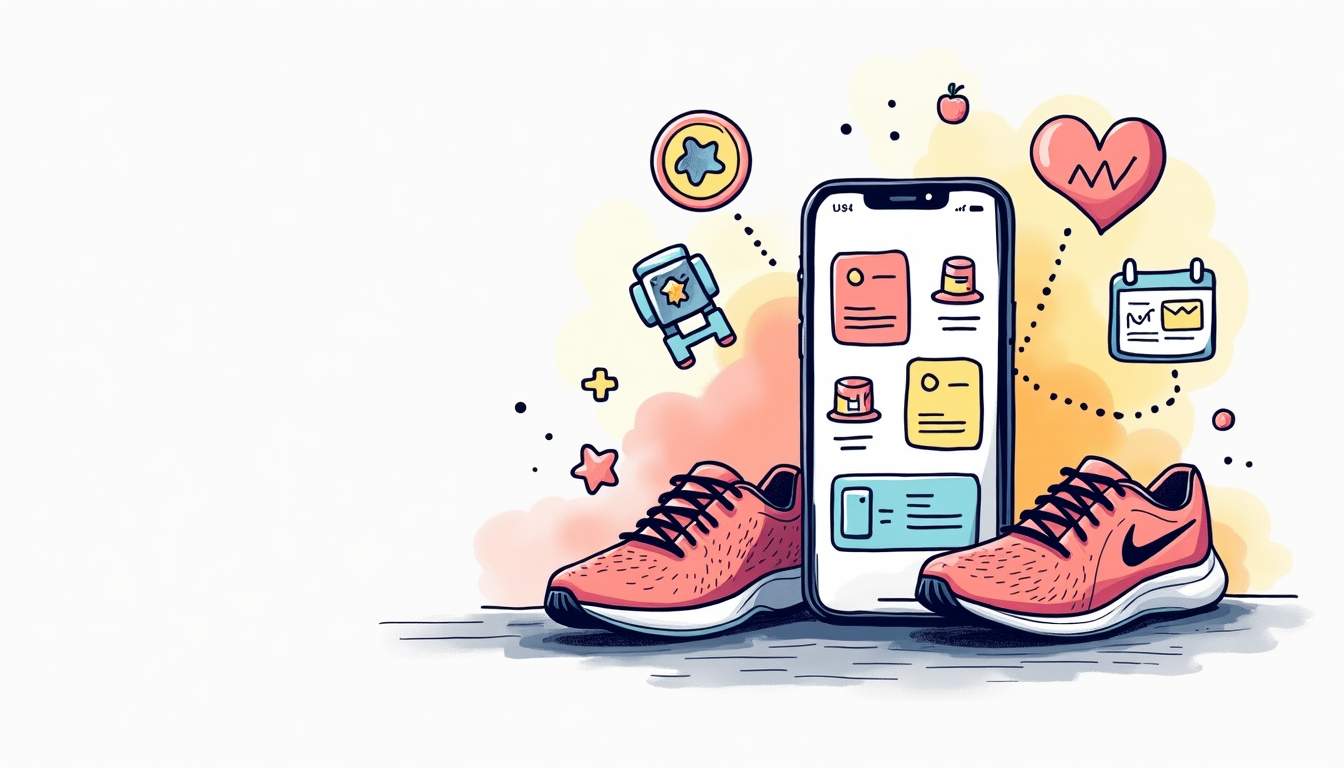The fitness app industry is booming. From workout trackers and nutrition planners to AI-powered training platforms, apps are now central to how people stay healthy. The global market is projected to surpass $120 billion by 2028, creating massive opportunities for entrepreneurs, trainers, and healthcare innovators.
But before you dive in, one critical question arises:
How much does it cost to develop a fitness app?
The short answer: anywhere from $25,000 for a simple MVP to $300,000+ for advanced platforms. The long answer depends on your app’s complexity, features, and development approach. Let’s break it down.
Fitness App Development Cost by Complexity
Basic apps (MVP level)
These are lightweight apps that provide essential functions like user accounts, a workout library with text and images, timers, and basic tracking. They’re perfect for trainers or startups validating an idea. Expect to spend around $25,000–$50,000 for one platform, or up to $75,000 for both iOS and Android. Development usually takes 2–4 months.
Mid-level apps (the most common tier)
This is where most commercial apps fall. They include video workouts, progress analytics, push notifications, wearable integrations, and subscription payments. Development typically costs $75,000–$150,000 and takes 4–7 months.
Advanced apps (enterprise-level platforms)
At the high end are apps like Peloton or Apple Fitness+, featuring live-streamed classes, AI personalization, gamification, and social communities. These require $150,000–$350,000+ and a timeline of 8–12+ months.
What Drives Fitness App Development Cost
Several factors impact where your app lands on this scale:
- Platform choice: One platform is cheaper; cross-platform tools like Flutter/React Native save money versus building two native apps.
- Features: Advanced features like wearable integrations, AI coaching, or video streaming each add significant cost.
- Design and UX: Custom interfaces and smooth user journeys cost more but directly impact retention.
- Backend infrastructure: Scalable systems to handle analytics, payments, and video libraries add thousands to budgets.
- Team location: Hiring in North America can cost $100–$250/hour, while Eastern Europe or Asia ranges from $20–$100/hour.
Real-World Case Studies
Strava: Social Meets Fitness
Strava started as a simple cycling tracker but became a global social fitness network by layering on GPS tracking, route maps, and community challenges. While the MVP may have cost around $50,000–$100,000, the platform today would easily exceed $300,000+ in development, thanks to integrations with hundreds of devices, advanced analytics, and social features. The lesson? Start lean, then expand with features users demand.
MyFitnessPal: Nutrition at Scale
MyFitnessPal began as a straightforward calorie counter. Early development likely cost in the mid-five figures, but scaling to millions of users required huge investment in backend systems, food databases, and cross-platform apps. It eventually sold to Under Armour for $475 million. This shows how even a relatively simple concept can evolve into a large-scale platform with continuous investment.
Peloton: Premium Content + Tech
Peloton demonstrates what happens at the top end of fitness app development. Beyond the bike hardware, its app features live-streaming, subscription management, video libraries, gamification, and personalization. Building something similar would easily require $300,000–$500,000+, plus ongoing monthly costs for content production, cloud hosting, and customer support.

Ongoing Costs Beyond Development
Launching is only step one. Budget for:
- Cloud hosting: $100–$10,000/month depending on usage.
- Content production: $2,000–$50,000/month for new workouts and videos.
- Maintenance: 15–20% of initial build per year for updates and bug fixes.
- Marketing: $5,000–$50,000+/month for user acquisition.
- App store fees: Apple ($99/year), Google ($25 one-time), plus commissions on in-app purchases.
Compliance and Security
Fitness apps often handle sensitive health data, making compliance a must:
- GDPR in Europe (data protection and consent).
- HIPAA in the U.S. (if handling protected health info).
- COPPA if targeting under-13 users.
- App store health policies (strict guidelines for using HealthKit/Google Fit).
Compliance adds to development costs but is essential for user trust.
How to Keep Costs Under Control
- Start with a Minimum Viable Product (MVP) to validate your idea.
- Use cross-platform frameworks if you need iOS and Android coverage.
- Phase features: add social or AI later once you know what users want.
- Leverage ready-made APIs and templates to avoid reinventing the wheel.
- Combine offshore developers with senior product oversight for best value.
Why Iteration Speed Matters
One of the biggest mistakes in fitness app development isn’t overspending on features—it’s moving too slowly to validate the product. Apps like Strava and MyFitnessPal succeeded because they iterated quickly, listening to user feedback and adding the right features over time.
This is where Wednesday Solutions’ Launch program adds real value. Their AI-driven product engineering sprints help startups build faster, test faster, and learn faster. By combining AI frameworks with an offshore delivery model, they deliver:
- More sprints for the same budget.
- Faster user feedback loops.
- Reduced development waste.
- A clearer path to product-market fit.
Their entry program, Sprint Zero, is a four-week structured engagement that delivers a roadmap, technical architecture, UI/UX style guide, and even a freemium tool to start gathering user traction. With a money-back guarantee, it’s a low-risk way to move from idea to execution.
Final Thoughts
The cost to develop a fitness app in 2025 ranges from $25,000 for a basic MVP to $300,000+ for enterprise-grade platforms like Peloton. What matters is not just the budget, but how you spend it.
- Invest in user experience, backend stability, and content quality.
- Phase in costly extras like AI or gamification once you have traction.
- Learn from case studies: Strava and MyFitnessPal started simple, then scaled.
- Consider structured approaches like Wednesday Solutions’ Launch program to minimize risk and maximize outcomes.
With the right strategy, your fitness app idea can become the next success story in this fast-growing market.






